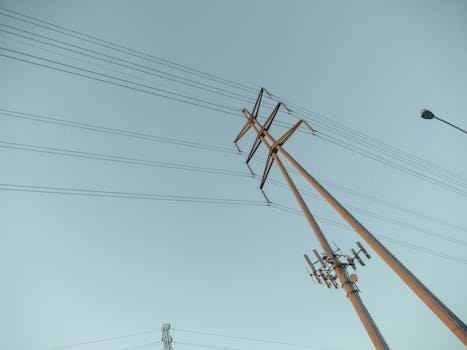“Illuminate Your Path: Master Solar Wiring and Sidestep Common Pitfalls!”
Solar wiring for beginners is a crucial aspect of setting up a solar power system effectively and safely. Understanding the fundamentals of solar wiring helps ensure optimal performance and longevity of the system while minimizing potential hazards. This introduction will highlight common mistakes that novices often make, such as improper wire sizing, incorrect connections, and neglecting safety protocols. By addressing these pitfalls, beginners can gain confidence in their ability to design and install a reliable solar energy system, ultimately leading to a more efficient and sustainable energy solution.
Understanding Solar Wiring Basics
Understanding the basics of solar wiring is essential for anyone looking to harness the power of the sun effectively. As solar energy systems become increasingly popular, it is crucial to grasp the fundamental concepts that underpin their operation. At the heart of any solar installation lies the wiring, which connects various components such as solar panels, inverters, and batteries. A solid understanding of these connections not only ensures optimal performance but also helps avoid common pitfalls that can lead to inefficiencies or even system failures.
To begin with, it is important to recognize the different types of wiring used in solar installations. Generally, there are two main types: direct current (DC) and alternating current (AC) wiring. Solar panels generate electricity in DC, which is then converted to AC by the inverter for use in homes and businesses. Understanding this distinction is vital, as it influences how you will wire your system. For instance, when connecting solar panels in series or parallel, you must consider the voltage and current ratings to ensure compatibility with your inverter and other components.
Moreover, selecting the right gauge of wire is crucial for maintaining system efficiency. Wire gauge refers to the thickness of the wire, which directly affects its ability to carry current. Using a wire that is too thin can lead to voltage drop, resulting in energy loss and potential overheating. Conversely, using a wire that is too thick can be unnecessarily expensive and cumbersome. Therefore, it is essential to consult the National Electrical Code (NEC) guidelines or a professional to determine the appropriate wire gauge based on the distance between components and the expected current load.
In addition to wire gauge, understanding the importance of proper connections cannot be overstated. Loose or corroded connections can create resistance, leading to energy loss and increased risk of fire. To avoid this, it is advisable to use high-quality connectors and ensure that all connections are tight and secure. Furthermore, regular maintenance checks can help identify any issues before they escalate, ensuring the longevity and reliability of your solar system.
Another common mistake beginners make is neglecting to account for the environmental factors that can affect wiring. For instance, exposure to sunlight, moisture, and temperature fluctuations can degrade wiring over time. Therefore, it is essential to use UV-resistant and weatherproof materials, especially for outdoor installations. Additionally, proper routing of wires can help protect them from physical damage and reduce the risk of interference from other electrical systems.
As you delve deeper into solar wiring, it is also important to familiarize yourself with safety protocols. Working with electricity can be dangerous, and adhering to safety standards is paramount. Always disconnect power before making any changes to your system, and consider using a multimeter to check for voltage before handling wires. If you are unsure about any aspect of the installation, consulting a professional can save you time, money, and potential hazards.
In conclusion, understanding solar wiring basics is a critical step for anyone embarking on a solar energy project. By grasping the differences between DC and AC wiring, selecting the appropriate wire gauge, ensuring secure connections, considering environmental factors, and adhering to safety protocols, beginners can avoid common mistakes that may hinder their solar system’s performance. With careful planning and attention to detail, you can create a reliable and efficient solar energy system that meets your needs and contributes to a sustainable future.
Common Wiring Mistakes to Avoid
When embarking on a solar wiring project, whether for a small residential system or a larger installation, understanding common wiring mistakes is crucial for ensuring safety, efficiency, and longevity of the system. One of the most prevalent errors beginners make is underestimating the importance of proper wire sizing. Using wires that are too small can lead to overheating and energy loss, while oversized wires can be unnecessarily costly. It is essential to calculate the appropriate wire gauge based on the current load and the distance between the solar panels and the inverter or battery bank. This calculation not only helps in maintaining efficiency but also minimizes the risk of fire hazards.
Another frequent mistake involves neglecting to account for voltage drop. As electricity travels through wires, it experiences a drop in voltage, which can significantly affect the performance of a solar system. Beginners often overlook this factor, leading to reduced energy output. To mitigate voltage drop, it is advisable to keep wire runs as short as possible and to use thicker wires for longer distances. Additionally, understanding the difference between series and parallel wiring configurations is vital. While series wiring increases voltage, parallel wiring increases current. Misconfiguring these setups can lead to imbalances that compromise the system’s performance.
Moreover, many newcomers to solar wiring fail to properly secure connections. Loose or poorly connected wires can create resistance, leading to overheating and potential system failure. It is imperative to use appropriate connectors and ensure that all connections are tight and secure. Utilizing waterproof connectors can also prevent moisture ingress, which is a common issue that can lead to corrosion and electrical failures over time. Furthermore, beginners often neglect the importance of grounding their solar systems. Proper grounding protects both the equipment and the users from electrical surges and lightning strikes. It is essential to follow local codes and regulations regarding grounding to ensure safety and compliance.
In addition to these technical aspects, beginners sometimes overlook the significance of planning and organization. A well-thought-out wiring diagram can serve as a roadmap for the installation process, helping to avoid confusion and mistakes. Taking the time to sketch out the layout of the solar system, including the placement of panels, inverters, and batteries, can streamline the installation and reduce the likelihood of errors. Furthermore, labeling wires and components can save time and prevent mix-ups during troubleshooting or maintenance.
Another common pitfall is the failure to consider the environmental conditions where the solar system will be installed. Factors such as temperature fluctuations, exposure to sunlight, and potential physical obstructions can all impact the performance of the wiring. Using UV-resistant cables and ensuring that wires are protected from physical damage can enhance the durability of the installation. Additionally, beginners may not fully understand the importance of adhering to local electrical codes and regulations. These codes are designed to ensure safety and reliability, and failing to comply can result in legal issues or unsafe installations.
In conclusion, avoiding common wiring mistakes is essential for anyone looking to install a solar system. By paying attention to wire sizing, voltage drop, secure connections, grounding, planning, environmental considerations, and local regulations, beginners can significantly enhance the performance and safety of their solar installations. Taking the time to educate oneself and meticulously plan the wiring process will ultimately lead to a more efficient and reliable solar energy system.
Essential Tools for Solar Wiring
When embarking on a solar wiring project, having the right tools at your disposal is crucial for ensuring both safety and efficiency. The first essential tool you will need is a multimeter. This device is invaluable for measuring voltage, current, and resistance, allowing you to troubleshoot any issues that may arise during installation. By regularly checking the electrical parameters, you can ensure that your solar system is functioning optimally and avoid potential pitfalls that could lead to system failure.
In addition to a multimeter, wire strippers are another fundamental tool for solar wiring. These handy devices allow you to remove insulation from the ends of wires without damaging the conductive material underneath. Properly stripped wires are essential for making secure connections, which in turn helps to prevent energy loss and potential hazards. When using wire strippers, it is important to choose the right gauge for the wire you are working with, as this will ensure a clean cut and a reliable connection.
Furthermore, a good set of crimping tools is necessary for creating strong, durable connections between wires and terminals. Crimping tools compress metal connectors onto the wire ends, providing a secure and stable connection that can withstand the rigors of outdoor conditions. It is advisable to practice crimping techniques on scrap wire before working on your actual solar system, as this will help you develop the skill needed to create reliable connections.
Another important tool in your solar wiring toolkit is a cable cutter. While it may seem straightforward, using the right cable cutter can make a significant difference in the quality of your work. A clean cut is essential for ensuring that wires fit snugly into connectors, which helps to maintain a solid electrical connection. Additionally, using a cable cutter designed for the specific gauge of wire you are working with will prevent fraying and other damage that could compromise the integrity of your solar system.
As you gather your tools, don’t overlook the importance of safety equipment. Personal protective gear, such as gloves and safety glasses, should always be worn when working with electrical components. This not only protects you from potential injuries but also instills a sense of responsibility when handling electrical systems. Moreover, having a first aid kit on hand is a wise precaution, as it ensures that you are prepared for any minor accidents that may occur during the installation process.
In addition to these tools, it is also beneficial to have a reliable source of information at your fingertips. Whether it’s a comprehensive guidebook or online resources, having access to expert advice can help you navigate the complexities of solar wiring. This knowledge can be instrumental in avoiding common mistakes, such as improper wire sizing or incorrect connections, which can lead to inefficiencies or even system failure.
Ultimately, the right tools combined with a solid understanding of solar wiring principles will set you on the path to success. By investing in quality equipment and prioritizing safety, you can ensure that your solar installation is not only effective but also long-lasting. As you gain experience and confidence in your skills, you will find that the process becomes more intuitive, allowing you to tackle increasingly complex projects with ease. In this way, the journey into solar wiring can be both rewarding and empowering, paving the way for a sustainable energy future.
Safety Tips for Solar Wiring Projects
When embarking on solar wiring projects, safety should always be the foremost consideration. Understanding the intricacies of solar wiring is essential, not only for the efficiency of the system but also for the safety of those involved. One of the most critical aspects to keep in mind is the importance of proper planning. Before you even begin to handle wires or components, take the time to thoroughly review the installation manual and any relevant guidelines. This preparation will help you identify potential hazards and ensure that you have all the necessary tools and materials at hand.
As you start your project, it is vital to wear appropriate personal protective equipment (PPE). This includes safety goggles, gloves, and, if necessary, insulated footwear. These items will protect you from electrical shocks and other injuries that can occur during installation. Additionally, working in a well-ventilated area is crucial, especially if you are using materials that emit fumes or dust. Ensuring that your workspace is clean and organized will also minimize the risk of accidents.
When dealing with electrical components, it is essential to understand the concept of grounding. Grounding your solar system is a critical safety measure that helps prevent electrical shocks and protects your equipment from surges. Make sure to connect the grounding wire properly to the solar panels, inverter, and battery bank, if applicable. This step not only enhances safety but also ensures compliance with local electrical codes.
Moreover, it is important to use the correct gauge of wire for your solar system. Using wires that are too thin can lead to overheating and potential fire hazards, while wires that are too thick may be unnecessarily cumbersome and expensive. Always refer to the manufacturer’s specifications and local regulations to determine the appropriate wire size for your specific application. Additionally, ensure that all connections are secure and insulated to prevent short circuits. Loose connections can lead to arcing, which poses a significant fire risk.
As you work on your solar wiring project, be mindful of the weather conditions. Rain, snow, or high winds can create hazardous situations, especially when working with electrical components. If the weather is inclement, it is best to postpone your work until conditions improve. Furthermore, when installing solar panels on rooftops, ensure that you have a stable ladder and consider using a harness for added safety. Falls are a common cause of injury in home improvement projects, and taking precautions can significantly reduce this risk.
In addition to these practical safety measures, it is also wise to familiarize yourself with the local electrical codes and regulations governing solar installations. Compliance with these standards not only ensures safety but also helps avoid potential legal issues down the line. If you are unsure about any aspect of the installation, do not hesitate to consult a professional electrician or a solar installation expert. Their experience can provide valuable insights and help you avoid costly mistakes.
Finally, after completing your solar wiring project, take the time to conduct a thorough inspection of your work. Check all connections, ensure that the system is properly grounded, and verify that all components are functioning as intended. This final step is crucial in ensuring the long-term safety and efficiency of your solar energy system. By following these safety tips, you can confidently navigate your solar wiring project while minimizing risks and maximizing the benefits of renewable energy.
Q&A
1. **Question:** What is a common mistake when connecting solar panels in series?
**Answer:** A common mistake is mixing panels with different voltage ratings, which can lead to reduced performance and potential damage.
2. **Question:** What should beginners avoid when selecting wire gauge for solar installations?
**Answer:** Beginners often underestimate the importance of wire gauge; using a wire that is too thin can cause overheating and voltage drop, so it’s crucial to follow the appropriate wire sizing guidelines.
3. **Question:** What is a frequent error when installing solar charge controllers?
**Answer:** A frequent error is not matching the charge controller to the battery type and system voltage, which can lead to inefficient charging or battery damage.
4. **Question:** What mistake do beginners make regarding grounding in solar systems?
**Answer:** Beginners often neglect proper grounding, which is essential for safety and to prevent electrical shock or equipment damage.
Conclusion
In conclusion, beginners in solar wiring should prioritize understanding the basics of electrical systems, adhere to safety protocols, and carefully follow manufacturer guidelines to avoid common mistakes. Proper planning, using the right tools, and double-checking connections can significantly enhance the efficiency and safety of solar installations. By being mindful of these factors, newcomers can ensure a successful and effective solar energy setup.




